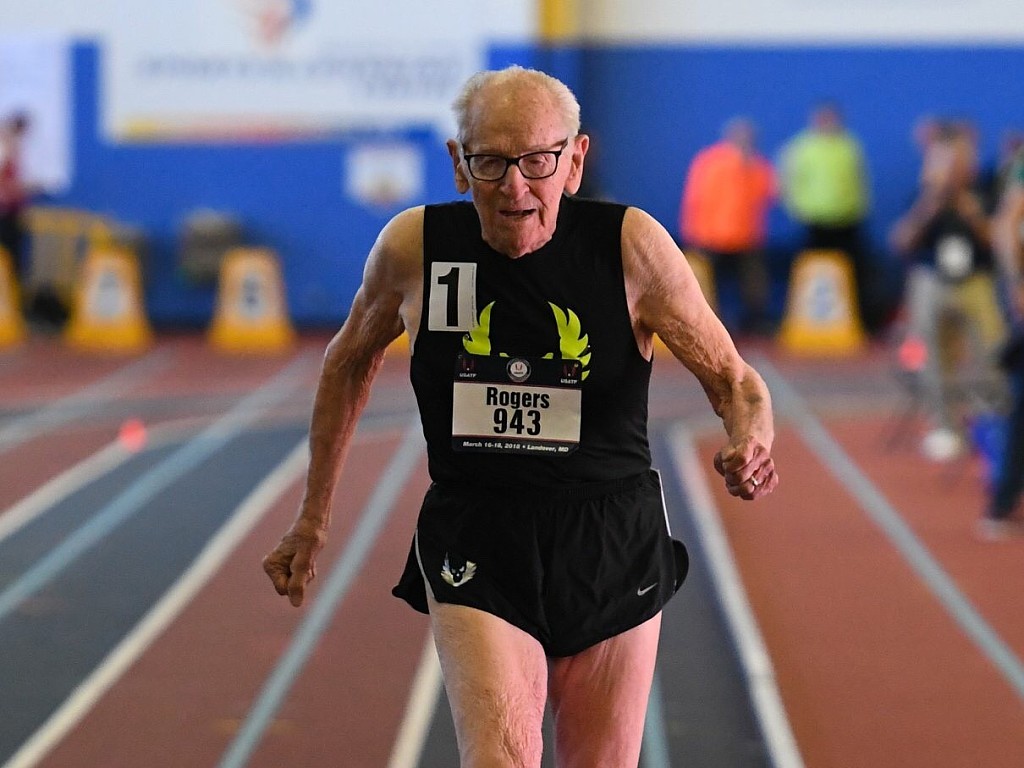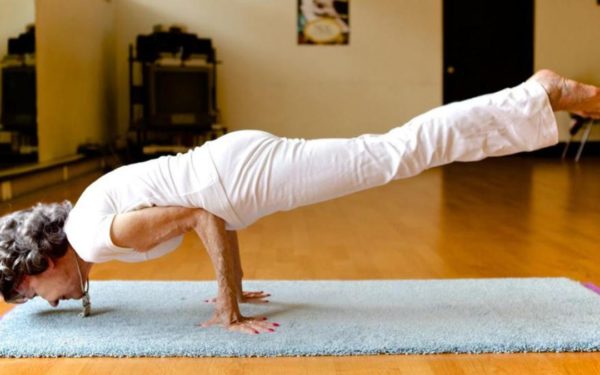
28 Oct Art of Aging Joyfully
Even if you have your financial house in order, if you are a Boomer (or just curious how) you might want to read this story by Elizabeth O’Brien for Money. It tells the tale of 100-year-old retirees who are still living very well thank you, as in one of them is still running; another is still teaching yoga.

Orville Rogers running strong at 100.
Orville Rogers is 100 years old and routinely breaks records at track meets around the country. Sure, the World War II veteran doesn’t have much competition in his age bracket, but that’s beside the point.
The point is that Rogers is in his fourth decade of retirement and still running in all the ways you want to be when you hit triple digits: a model of physical, emotional, and financial health. Rogers trained pilots in World War II, then went on to a successful career as a commercial pilot. His experience can help train us all for the future. Today’s retirement is a marathon, not a sprint, and Rogers is crushing it.
“Some people think I run because I can, but that’s backward,” says Rogers from his home in Dallas. “I can because I do.”
If America could just bottle Rogers’s can-do spirit—and his undoubtedly terrific genes—the country might fare a bit better in the decades to come. The world’s centenarian population is expected to grow eightfold by 2050, according to a Pew Research Center report of United Nations estimates, with America leading the pack in the sheer number of citizens age 100 and up. For a couple who are both 65 today, there’s a 50% chance one member will live to be 92, according to the Society of Actuaries.
You can chalk up much of this longevity to the fact that fewer Americans are smoking and dying of tobacco-related diseases. In fact, the cancer death rate has plunged at least 26% from its peak in 1991, according to the American Cancer Society. Medical breakthroughs that extend people’s lives are happening all the time, and it’s hard to say which cure is on the brink of discovery.
That means more and more people will be living the Orville Rogers life in the not-so-distant future. It also means a hefty retirement plan is in order. Think about it: Retire at 60, and you could be living the dream for 40 years. Retire at 80, and you still have two decades to hone your own marathon skills.
Meanwhile, the average savings of workers ages 60 to 64 with a 401(k) is $195,200, according to Fidelity. Is that enough to take most retirees across the finish line? Hardly. And experts are losing sleep over the looming shortfall. “We’re basically in worse shape than we’ve ever been,” says Tony James, executive vice chairman of private equity firm Blackstone and coauthor of Rescuing Retirement.
Rogers retired just before his 60th birthday in November 1977. He didn’t want to stop working then, but the airlines had set the mandatory retirement age at 60. As a pilot, he always knew his career wasn’t fully under his control. He was subject to regular flight tests and medical checkups, and failing any one of them could have put an even earlier end to his career. “I realized I was responsible for my own retirement,” he says. Rogers began socking away savings in a Merrill Lynch account in his mid-thirties, decades before the creation of the 401(k).
Financial advisors used to employ 30 years as their conservative benchmark for retirement planning purposes. They’d tell you to make sure your money would last until age 95, assuming retirement at the traditional age of 65. Now firms have started stretching their timelines.
“We’re definitely suggesting that people look longer than 30 years,” says Christine Russell, senior manager of retirement and annuities at TD Ameritrade.
It’s not that far-fetched to think you may be the next Rogers, and if you’re not adjusting your mindset to reflect that 40 is the new 30 when it comes to retirement planning, now’s a good time to start. Here’s how to prepare for the long road ahead.
Make the Mental Leap
Tao Porchon-Lynch striking a pose at 10o. (It’s Mayurasana or Peacock pose.)
On a recent Saturday morning at the Rubin Museum of Art in New York City, Tao Porchon-Lynch, a diminutive centenarian dressed in fuchsia Lycra, with fingernails and toenails painted to match, stood at the center of about 60 students fanning out in a semicircle around her. She was the highlight of a daylong slate of activities for which yogis had shelled out $175. Like a colorful hummingbird, she bent her right leg and rested her foot against her left inner thigh. Arms extended, fingers flexed skyward, the 100-year-old yoga teacher executed a perfect tree pose.
“When we droop inward, we get old,” Porchon-Lynch told her class.
Along with requisite sun salutations and mindful breathing, the students also got a master class in positive aging. With her big silver earrings and bright blue eyes, Porchon-Lynch radiated energy, beaming in every picture she took with fans after the class. Her secret is simple: Like Rogers, she can because she does. In other words, you can control how you age more than you might think. “The breath of life is in all of us, but most of us don’t use it all the time,” Porchon-Lynch told me after the class…



Sorry, the comment form is closed at this time.